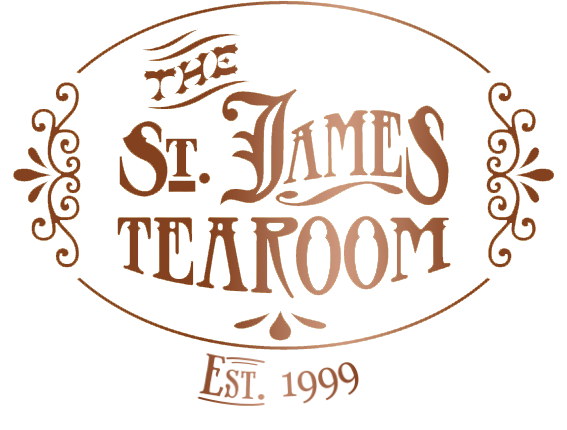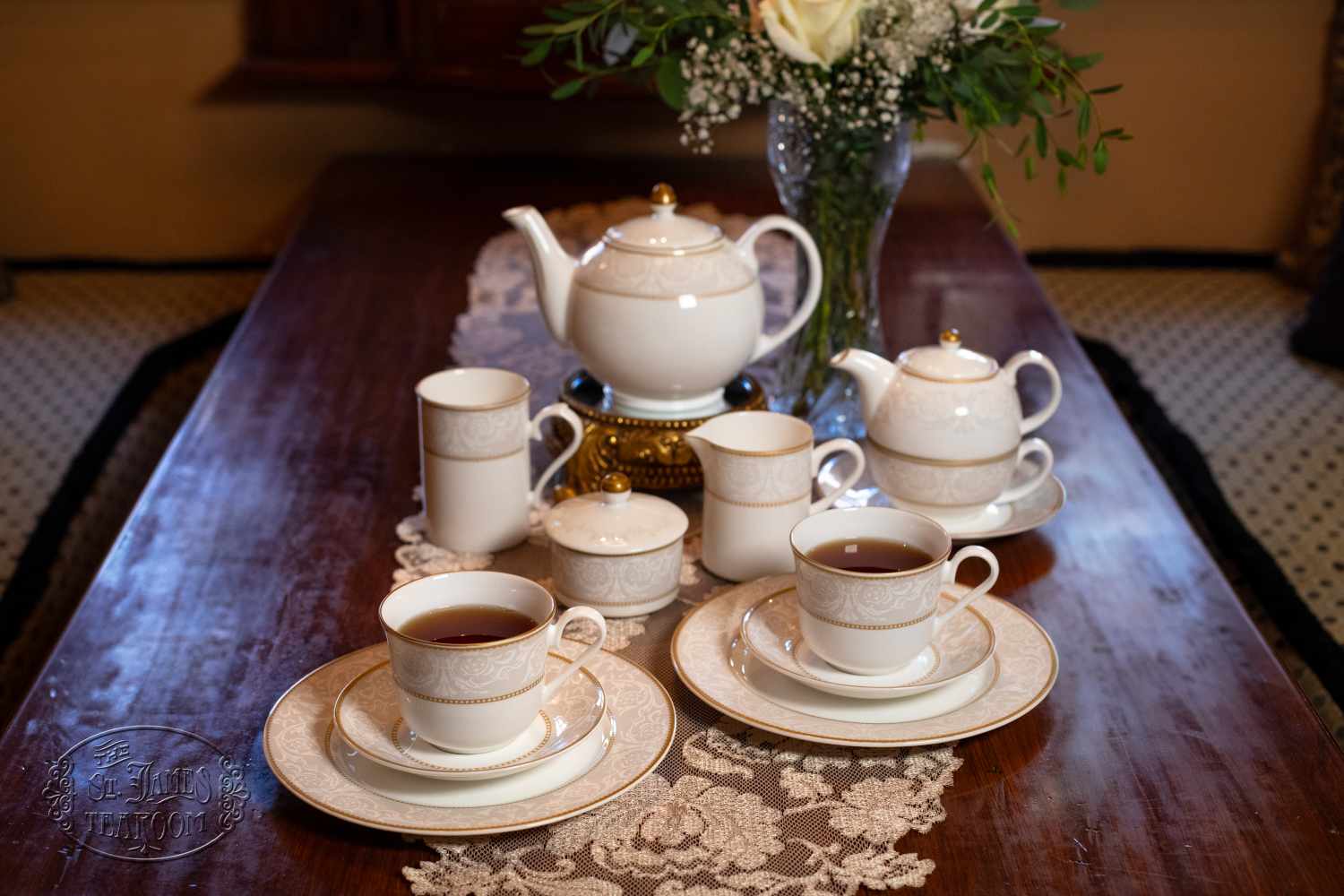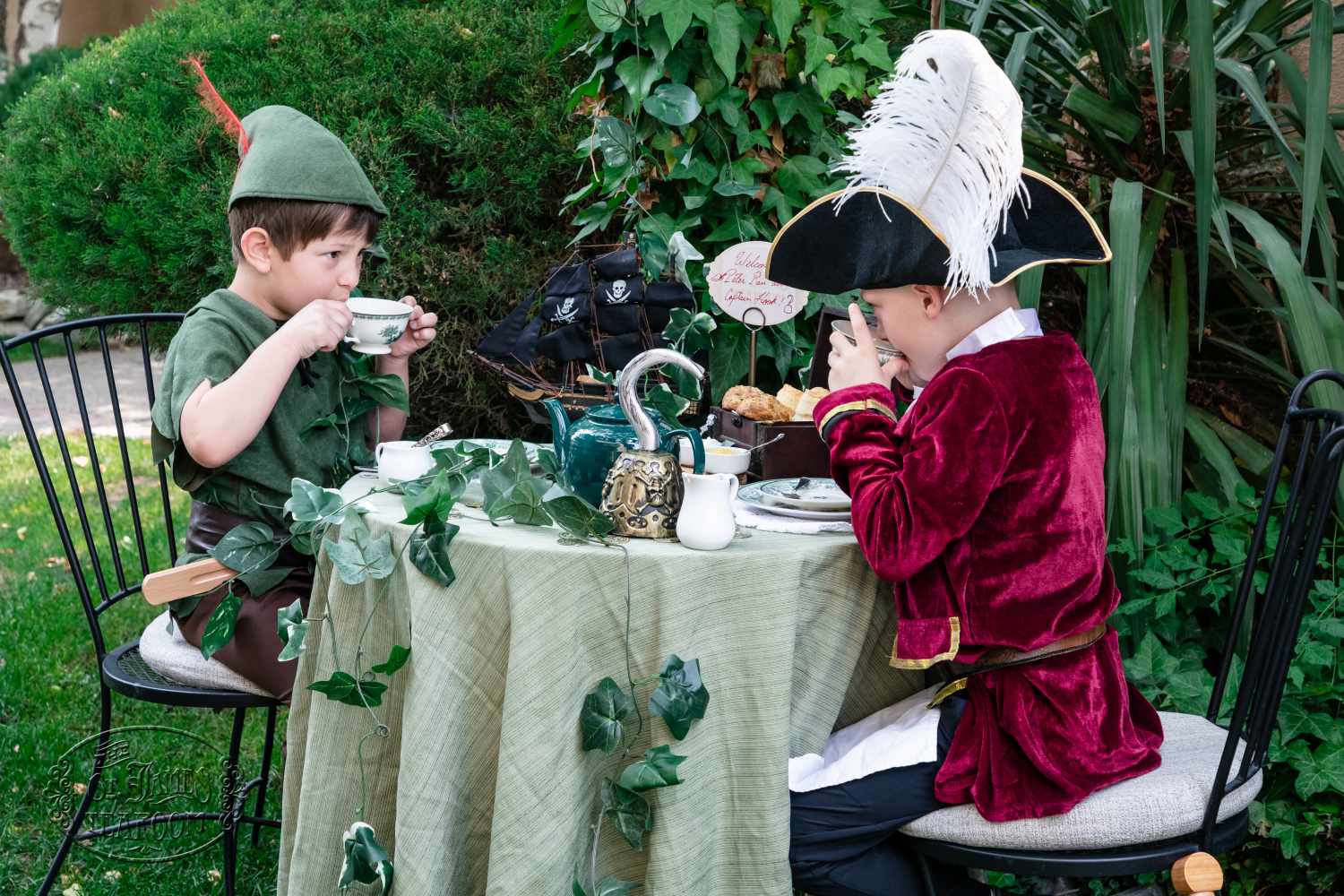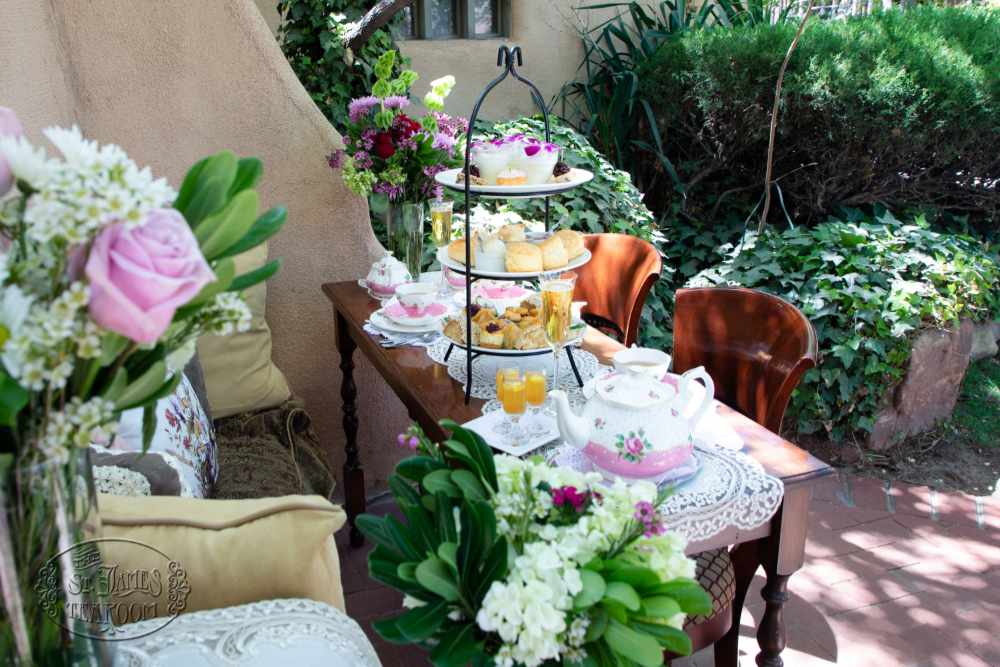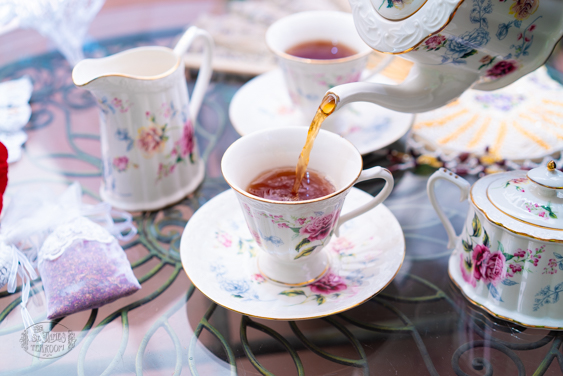
Tips for Tea at Home
Teatime, whether here at The St. James Tearoom or at your own kitchen table, can be a much-needed respite in one’s day. Whatever your reason or need for the tradition of a teatime, be it an interruption from your daily routine or the disconcerting news, here are a few tips to carry on this tradition at home:
Setting the table
At The St. James Tearoom, we start by setting our table with a lace placemat followed by a dessert plate topped with a teacup and saucer. To the right of the plate, arrange the spreader (tea knife) with the blade facing in, a larger demi spoon for eating, and a smaller demi spoon for stirring your tea. Finally, inside the cup, place a nicely folded cloth napkin.
If you don’t have china, or would prefer to use something more durable for a teatime with your children, opt for traditional dinnerware instead. For example, if using mugs in place of teacups, make sure the mug’s handle is facing to the right; if it is not the center of your place setting, set it in the upper right corner of your plate. If you have a set of dishes, opt for smaller plates to accommodate the finger foods with your teatime.
Serving the tea
Did you know that the person pouring the tea (generally the host) is traditionally referred to as the “Tea Mother?” Typically, as a Tea Mother, you would pour your guests’ tea first and serve yourself last. You would keep the teapot near your place setting for ease of access when refilling cups.
If serving more than one kind of tea, try to ensure each of your guests is able to have at least two cups’ worth. For example, if serving a party of three with standard-size teacups, which hold about six ounces, then select a teapot that holds thirty-six ounces.
Milk and sugar
Though the dishes to go along with your tea set are usually called “Cream and Sugar” sets, we actually recommend serving your tea with whole milk rather than cream. Many times, cream or even half & half will be too heavy and overpower the tea’s flavor rather than complement it. Also, if a tea’s ingredients include a citrus fruit, we suggest no milk at all, as the milk could curdle in the tea.
To select whether to serve brown sugar or white sugar with your teas, consider the notes or flavors of your tea. If a black tea has a light, puckery note to it, white sugar will complement the best. If the notes are malty or molasses, brown sugar will bring out those flavors. Dessert black teas are wonderful with brown sugar, while fruit teas are best with white.
Recipe ideas
Check out our Recipe Archive for lots of ideas on savories, scones, and desserts. The traditional Afternoon Tea that we serve at The St. James Tearoom, was originated by the Duchess of Bedford to satiate her hunger between lunch and dinner. She would snack on cakes and little sandwiches over a cup of tea with friends. These small treats can create a grand affair with friends.
However, this is not the only type of teatime you can enjoy! To create something simpler consider a Cream Tea. This term refers to a simpler offering of tea with scones, served with clotted cream, curd, or jam.
Making a whole teatime experience can be a fun affair, but also consider the time of day you plan to create your tea party. Maybe tea and dessert after dinner is best suited for your schedule, or mid-morning tea will satisfy a scone craving!
Tea pairing
Once you have selected your food, choose a tea that will best bring out the flavors. Traditional black teas generally go well with everything, but are particularly lovely with savories and breads. Keep in mind that if a dessert is too light, a black tea may overpower the flavors.
If you would enjoy a scented tea (one mixed with the flavors of fruit, flowers, or nuts), pair by either using similar or complementing flavors. For example, a strawberry pound cake would go well with our Afternoon in Mansfield Park tea because the density of the cake can hold up to a black tea, while the strawberry flavors will be brought out by the berries in the tea.
Another example of using complementing flavors comes from our “Charlie and the Chocolate Tearoom” menu. We pair our pretzel buns, a nice salty affair, with our Eye of the Tiger scented black tea. The chocolate and butterscotch add a nice balance to the saltiness, while the black tea complements the bread.
Just sit and sip
Whatever your teatime may look like, the most important part of the tradition of tea is connection and slowing down. All it takes are two cups of tea and a little time. We may dress up the occasion with scones and cucumber sandwiches, but ultimately the importance of it all is finding time together to talk, listen, laugh, and grow relationship.
While tradition helps guide our teatime experience here at The St. James Tearoom, the companionship is what helps make each teatime special. An anonymous author once said that “Bread and water can so easily be toast and tea.” Having tea, by yourself or with others, is a means to an end; it is meant to provide an opportunity to connect. Although the current circumstances require us to be home to help calm the spread of the existing pandemic, we can choose to use that time to slow down and do something meaningful with our family: finding joy and claiming the light in our own individual situations.
